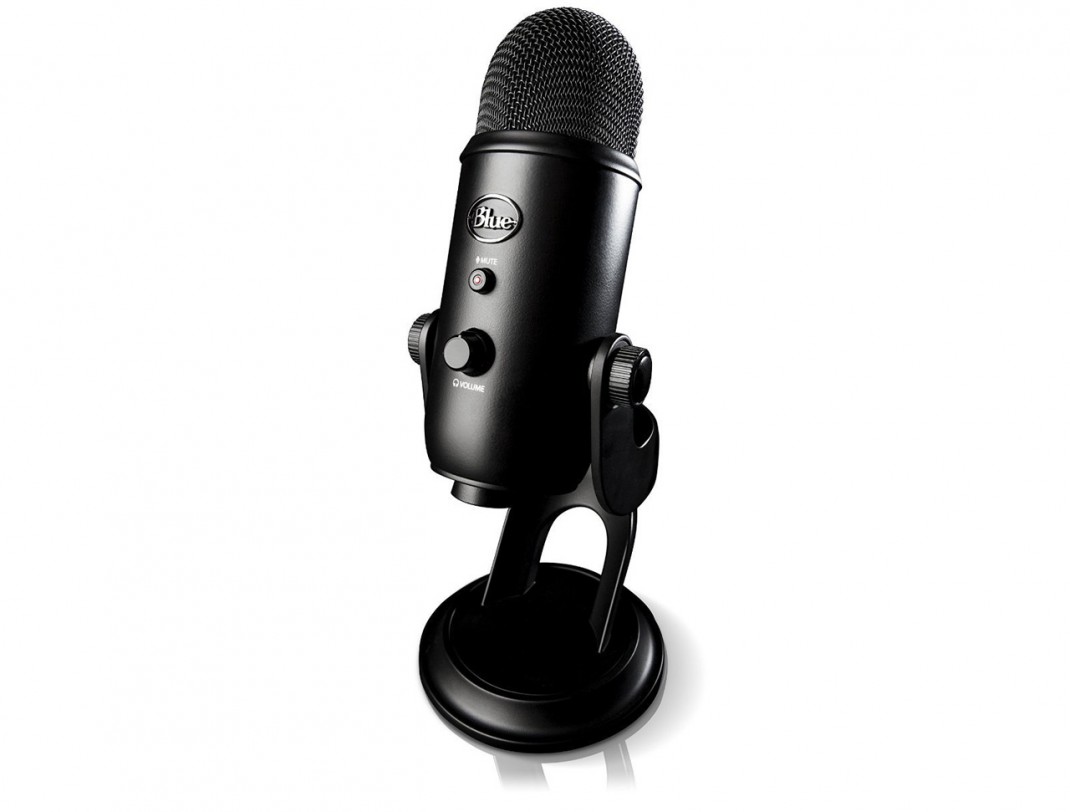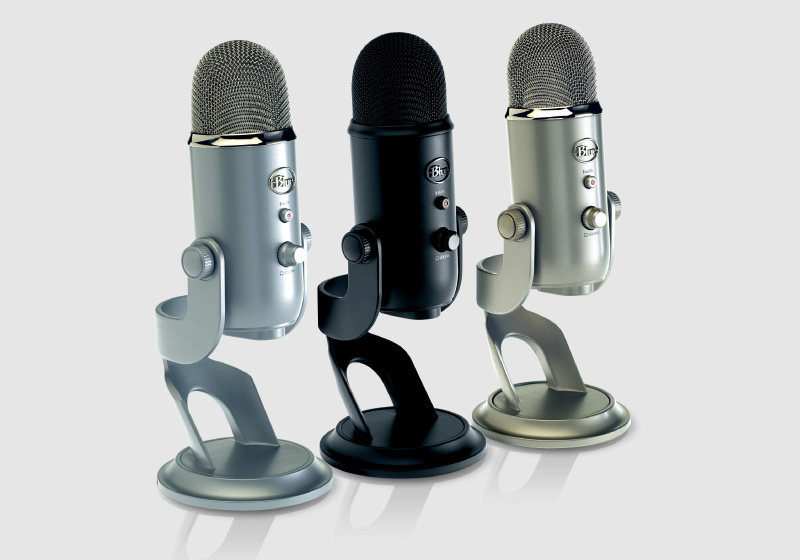Blue Microphones have long been known for their quality and this reputation has only grown – especially in this day and age of podcasts and game stream channels. Blue Microphones flagship USB-based microphone is the “Yeti”. Available in two flavors: standard and “Pro”, the Yeti family of microphone shares a similar design save for an XLR port on the Pro model. The Yeti has a professional aesthetic and is available in a variety of classy color schemes: Whiteout, Silver, Platinum, and Blackout.
The Blue Yeti’s build quality is excellent, and the microphone has a very solid feel in its three and a half pound form factor. While it sits on a removable base stand, it should be noted that there is an external shock mount available for the Yeti, which can be found on Blue’s official website. Something to note is that the Yeti stands about a foot high once connected to its base unit. It lives up to its namesake in being a monster in regards to the space it takes up. Be sure you have room on your desk or recording area to place it.
Using the Yeti is as simple as plugging it into a USB port on your computer. Any audio recording software should be able to utilize its input. I used SONAR and it had no trouble getting it to accept the microphone. As it is a USB-based microphone, however, I highly suggest consulting your audio software instructions on adding one USB microphone into your recording session. One really cool feature to note about the Yeti is that it allows you to plug a set of headphones into a latency-free monitor port on its bottom side. You will be able to hear exactly what the microphone is picking up that way.
A feature of many Blue Microphones microphone units is their multiple pickup patterns, and the Yeti is no different. It features four different audio pickup patterns: Cardioid, bidirectional, omni-directional, and stereo – each with its own strengths:
- STEREO MODE
- Uses both the left and right channels to capture a wide, realistic sound image—perfect for recording acoustic guitar or choir.
- CARDIOID MODE
- Well-suited to podcasts, vocal performances, voice-overs and instruments. Cardioid mode records sound sources that are directly in front of the microphone, delivering rich, full-bodied sound.
- OMNIDIRECTIONAL MODE
- Picks up sound equally from all around the mic. It’s best used in situations when you want to capture the ambience of “being there”—like a live recording of a band’s performance, a multi-person podcast or a conference call.
- BIDIRECTIONAL MODE
- Records from both the front and the rear of the microphone—ideal for recording a duet or a two-person interview.
Switching between these four modes is very easy – simply rotate a knob on the backside of the Yeti – each mode is denoted by a small icon. These icons represent the sphere or arc of pickup for each mode. I get them confused so I suggest you simply look at your instructions or on the Blue Microphones website for clarification on which is which. I have had the pleasure of previously using a Blue Microphones “Snowball” model microphone, and had solid results. The Yeti is even better, with a much more stable base stand as well as better range of motion when connected to said stand.
Overall, the Yeti from Blue Microphones is an exceptional microphone – whether you are a podcaster, video game streamer, or budding musician looking to lay-down some tracks. Its plug and play capabilities mixed with the Yeti’s four pickup patterns makes it especially handy in just about any situation.
[easyreview title=”Blue Microphones Yeti Review Score” cat1title=”Overall Score (out of 5)” cat1detail=”” cat1rating=”5″ ]
[button target=”_blank” style=”” class=”btn_blue” link=”http://gamingshogun.com/gamingshogun-rating-system/”]Learn About Our Rating System[/button]






